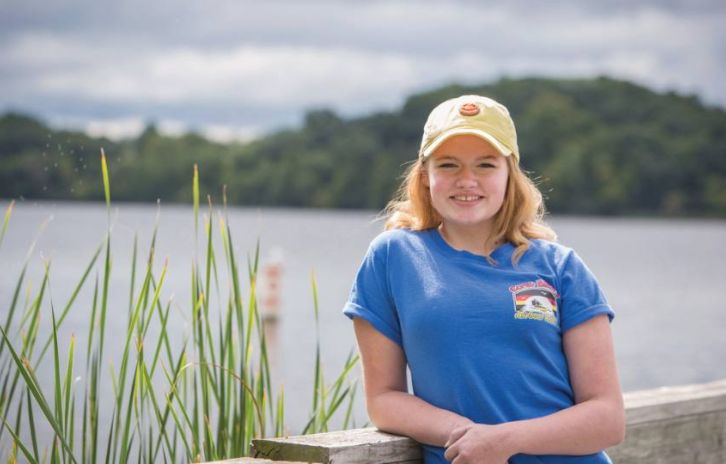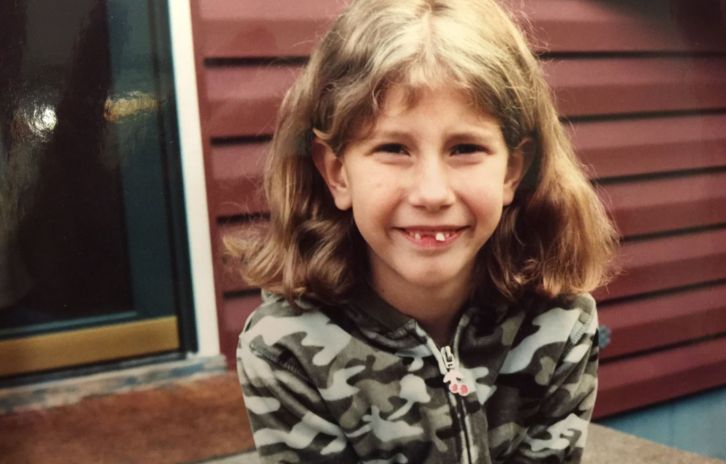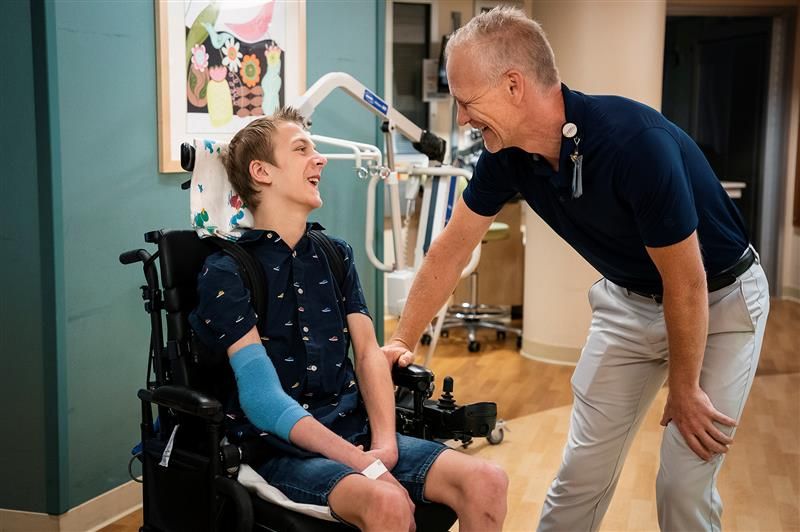
“It’s not an exaggeration to say deep brain stimulation (DBS) surgery at Gillette changed Sam’s life,” marvels his mother Coleen Wedig.
Sam Wedig, 16, and his mother first traveled to Gillette Children’s from Des Moines, Iowa in 2015 seeking help for cerebral palsy and dystonia. They’re passionate about sharing their story in the hope they can help other families dealing with similar medical challenges.
Sam’s first few months of life were difficult and he had many health concerns. He was not meeting milestones and was having difficulty eating and even drinking from a bottle. “It was a very tough time,” Coleen recalls. Initially, she worked with a team of doctors in Des Moines who suggested they travel to Gillette to get the care he needed.
“Dealing with CP and dystonia is not easy. The journey has many ups and downs but I want families to know there’s help and to express how grateful we are to have our team at Gillette,” Coleen says.
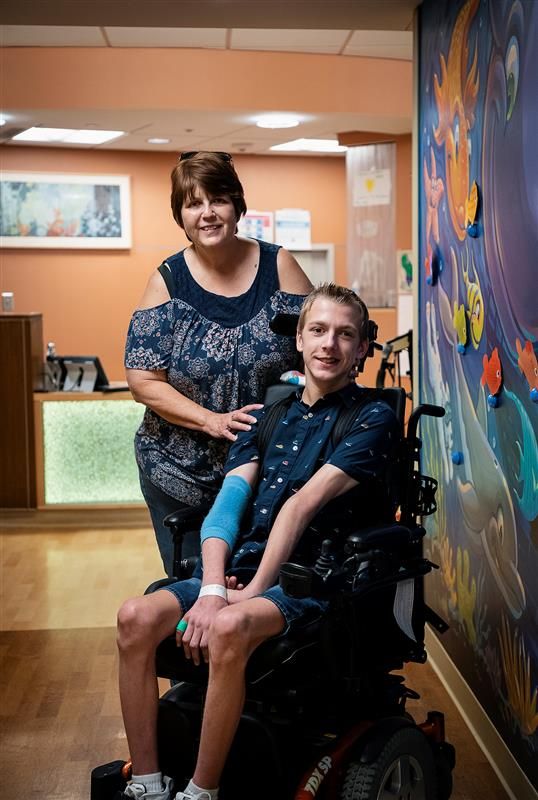
"Our lives changed forever."
Sam has dystonia which is a neurological disorder that causes his muscles to involuntarily contract uncontrollably. This often results in repetitive twisting movements and fatigue. There’s no cure for dystonia but medications and a surgical procedure called deep brain stimulation (DBS) is often used to treat the symptoms.
Gillette is one of the first two U.S. hospitals to use DBS therapy to treat children who have dystonia. The Gillette team, led by the associate medical director of neurosurgery and pediatric neurosurgeon, Patrick Graupman, MD and his colleague, associate medical director of Neurology and pediatric neurologist Tim Feyma, MD have followed Sam for years.
When Sam was first examined at Gillette in December 2015 the team of experts agreed he would benefit from DBS.
“The decision to have Sam go through the surgery was not really difficult,” says ColeenWedig. “I thought, this is a real chance for Sam to improve his life and we had to take this opportunity to change his life for the better. All surgery has risks but I knew he was in good hands with Gillette.”
During Sam’s first DBS procedure Patrick Graupman, MD, implanted a lead (also called an electrode) in a targeted area of his brain. The electrode is then attached to a neurostimulator (or battery pack) which is usually implanted under the skin near the collarbone. Because Sam was so thin Gillette doctors had to implant the neurostimulator in Sam’s abdomen. The DBS system sends electrical impulses through the neurostimulator that block the electrical activity that is causing the abnormal, involuntary movement. Graupman has compared this technology to how a pacemaker is used to treat heart arrhythmias.
This first DBS surgery was a success. “I tell people that on December 14, 2015 our lives changes forever,” says Coleen Wedig. That’s the day Sam came out of his surgery. Eight days later, on December 23, 2015 Sam and his mother were released from Gillette and got to celebrate the holidays with the rest of their family in Iowa.
“The milestones kept coming after the surgery,” Coleen reports. “On January 30, 2016 Sam had enough control of his muscles to put on deodorant by himself. On February 7th he brushed his teeth by himself for the first time. Eventually he began to control his electronic wheelchair by himself. These might seem like small things to some people but for us these accomplishments allowed Sam to be more independent. I want other families to know how beneficial DBS can be for their child.”
Tim Feyma, MD, says he’s encouraged by how DBS helps his patients. “In the population we focus on for dystonia and deep brain stimulation treatment we see improvements in tone and patient comfort,” Feyma says.
Painting, bowling and zip lining
After his successful DBS surgery Sam became more independent and active. He went to school dances, was a mime in his school play, participated in adaptive bowling and baseball and, with the help of a family friend he created paintings.
“We love Gillette’s mission of ‘Helping Kids Discover What they CAN do,’ Coleen says. “This really inspired us to challenge Sam and help him live a full life.”
Coleen and Sam were aware that he would need to undergo another DBS surgery around the time Sam turned 15. “The type of DBS Sam initially received did not have a rechargeable battery so we knew at about the 4 or 5 year mark we’d have to come back to Gillette for another procedure,” Coleen says.
During that time period Sam also went through a big growth spurt. “Because he grew so much it began to pull and fray the wires in his DBS,” Coleen explains. After a thorough evaluation from his team of Gillette providers it was determined that Sam needed to get a new DBS and this time it would be moved from his belly to his collarbone area. This new device would have a rechargeable battery pack.
Just weeks before his second DBS surgery at Gillette Sam attended the National Wheelchair Sports Camp in Ironwood, Minnesota this past summer. “He got to zip line and take on challenges we never thought he would do,” Coleen exclaims. “It was an incredible experience and we’re glad he had this fun at camp before his DBS surgery on July 15th.”
A bumpy recovery and a happy ending
In the initial days after his DBS surgery Sam experienced some side effects including a temporary loss of muscle control, anxiety and confusion. This is because the medical team needs to fine tune the DBS device to help control a patient’s symptoms and his medication also needed to be monitored.
His mother was concerned but confident the Gillette team would help Sam return to being an active teenager. Coleen calls it a dystonic storm and says, “I won’t sugar coat it—when Sam first came out of his second DBS surgery it was difficult.”
When the neurostimulator is turned on, it delivers stimulation that might decrease symptoms. It can take up to a year for a child or adult using brain stimulation therapy to see its full effect. Deep brain stimulation is adjustable meaning the stimulation settings can be changed as needed. It is also reversible. DBS does not destroy or remove any part of the brain and the neurostimulator can be removed.
Sam spent several weeks in the Gillette pediatric intensive care unit (PICU) before he was transferred to the neuro unit so he could be monitored while he continued to recover.
Feyma says his team helps to prepare families for the journey of DBS therapy. “Sometimes the benefit of deep brain stimulation is best seen when a device starts to fail,” Feyma says. “In situations like Sam’s, this means his tone worsened to a degree that he simply couldn’t be cared for at home. With time, medication management, surgery and patients, we were able to get Sam on a path back to health with return to full participation in life activities.”
Coleen admits the recovery time was longer than expected but says the Gillette team helped to reassure them and provided a very high level of care. “I can’t say enough about the doctors, nurses and the whole team at Gillette,” Coleen remarks. “Every nurse knew my son by name and always asked how they could help or make us more comfortable. It was incredible.”
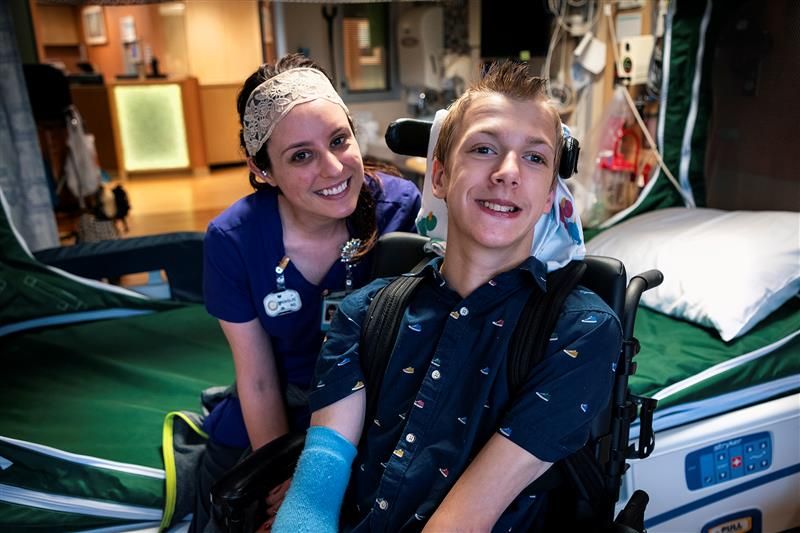
Heading home to discover what Sam CAN achieve
Sam and Coleen Wedig headed back to Iowa on August 26, 2019 but came back to Gillette the Monday before Thanksgiving. "We came back to Gillette because Sam was not progressing as fast at his team wanted him to," Coleen reports.
"It was just truly the perfect storm for things to not go smoothly for Sam," Coleen says. "He's 16 and between his growth spurt and his hormones Sam's brain and body were undergoing a lot of changes."
Sam spent four weeks in the Gillette inpatient rehabilitation unit getting more therapy and more monitoring from his team of doctors. "We're so grateful for the care he received. They really worked with Sam to help him understand himself and gave him techniques to help him relax and regulate his body," Coleen says.
The Wedigs spent a happy holiday season in Iowa with friends and family.
Coleen adds, “We truly love the mission of Gillette and I believe Sam is a true example of that mission. We're excited to see what else Sam CAN achieve. “
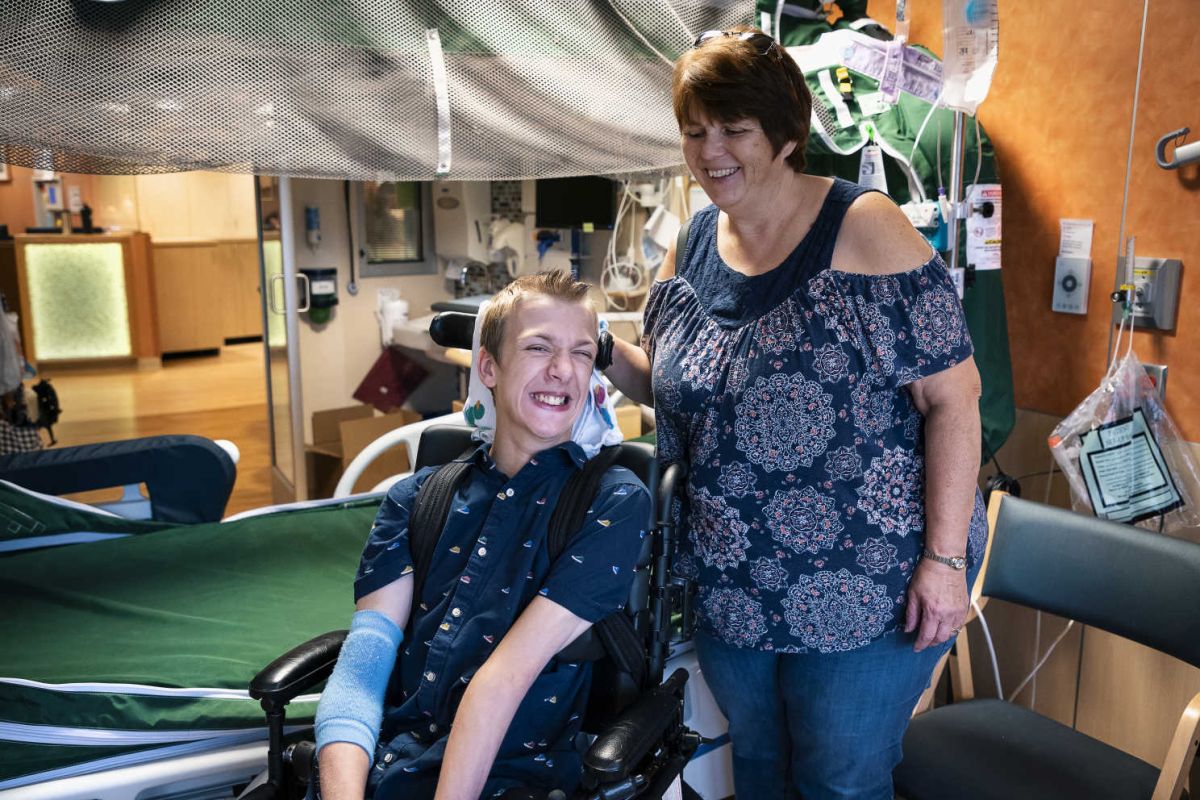
Do these symptoms sound familiar? Our 30-minute consult appointment could help get answers.
Request an appointment to connect with Gillette providers.
Meet a care team provider, find a location, learn how to get a second opinion, and more.
Gillette kids fuel our mission. You provide the spark. Donate today.

